
HOME
INTRO
SYMBOLS
ALMANAC
ECONOMY
GEOGRAPHY
STATE MAPS
PEOPLE
FORUM
NEWS
COOL SCHOOLS
STATE QUIZ
STATE LINKS
BOOK STORE
MARKETPLACE
NETSTATE.STORE
NETSTATE.MALL
GUESTBOOK
CONTACT US


South Carolina State Heritage Horse
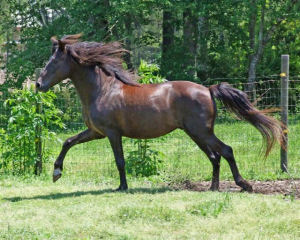
South Carolina Heritage Horse: Marsh Tacky
Photograph © Jackie McFadden. Used with permission.
In 2005, House Bill No. 3772 (HB3772) was introduced, proposing that the marsh tacky be named the official state horse of South Carolina. HB3772 was introduced, read once in the House of Representatives, and assigned to a House committed for consideration. The bill never made it out of committee for a vote.
Again, in 2006, a bill was introduced urging the adoption of the marsh tacky as the state's official horse. Again, the bill was left in committee, never coming to the House floor for a vote.
In 2008, the fledgling Carolina Marsh Tacky Association, as part of their efforts to gain attention for the preservation of the Carolina marsh tackies, formed a committee to facilitate efforts to declare the marsh tacky the official state horse of South Carolina. Jackie McFadden was named to head the committee.
2008 saw the introduction of House Bill No. 3044 (HB3044) for the consideration of the 118th South Carolina Legislature (2009-2010).
Also introduced, in January, 2009, was a bill in the Senate to name the marsh tacky the official "heritage horse." This was Senate Bill No. 1030 (SB1030).
SB1030 was passed in the Senate on April 20, 2010 and sent to the House for its consideration.
It was in the House that SB1030 was amended to include the mule as the official state heritage work animal.
The House passed the bill on May 12, 2010, as amended, and sent it back to the Senate for its approval.
The Senate made a small change and corrected an error and passed the bill back to the House, where SB1030 received final legislative approval on June 1, 2010.
The reasons to name the marsh tacky the official state heritage horse are clearly spelled out in Senate Bill No. 1030.
A BILL
TO AMEND THE CODE OF LAWS OF SOUTH CAROLINA, 1976, BY ADDING SECTION 1-1-714 SO AS TO DESIGNATE THE MARSH TACKY AS THE OFFICIAL STATE HERITAGE HORSE OF SOUTH CAROLINA.
Amend Title To Conform
Be it enacted by the General Assembly of the State of South Carolina:
SECTION 1. The General Assembly finds:
(1) The Marsh Tacky, a rare colonial Spanish horse breed unique to South Carolina, has played a significant role in South Carolina's history. After abandonment by the Spanish on the South Carolina Sea Islands and along the South Carolina coast some five hundred years ago, the Marsh Tacky survived on its own and developed into a unique strain of colonial Spanish horse. These tough, little horses assisted our forefathers in the development and defense of our State and were the major source of transportation in the Lowcountry before the introduction of the automobile. Marsh Tackies were important to the Gullah community and became an integral part of agricultural life for Lowcountry families. Marsh Tackies were used wherever horsepower was needed; to pull plows and wagons, herd cattle, hunt wild game, deliver the mail, transport families, and as loyal, sturdy war mounts. Most Lowcountry families had Marsh Tackies in their fields or gardens.
(2) During the American Revolution, Marsh Tackies assisted in the victories of the famous 'Swamp Fox' General Francis Marion, whose troops of 'Irregulars' had the advantage of being mounted on small, agile horses that were superbly adapted to the Lowcountry's rough, swampy terrain. Marsh Tackies required little care from the troops, were able to travel long distances without fatigue, and survived on forage, reducing the need for supply wagons carrying grain. The sure-footed Marsh Tacky enabled the militia to out maneuver the British troops who rode larger European horse breeds that could not traverse the swampy forests.
(3) Marsh Tackies served the southern Confederate cavalry during the Civil War. Unlike northern troops who were issued horses, southern recruits were often required to provide their own mounts, which were trained and familiar with their riders, giving an early advantage to the southern forces.
(4) In World War II, Marsh Tackies were used by the Coast Guard's Mounted Beach Patrol to protect our mainland from enemy spies and saboteurs. The 'Beach Pounders' who patrolled the southeastern shore were trained at the Mounted Beach Patrol and Dog Training Center in Hilton Head, South Carolina, and patrolled the coast from Florida to North Carolina.
(5) Marsh Tackies have little changed since the colonial period. Relative isolation on the Sea Islands and secluded areas of the Lowcountry, along with owner dedication to the preservation of the breed, has allowed the Marsh Tacky to remain relatively untouched. Owners often comment on the built-in 'woods sense' of the breed and how the horses have a natural way of traversing water obstacles and swamps. Many horses display characteristics and primitive markings carried by their Spanish ancestors including dorsal stripes, zebra leg stripes, and lengthy manes and tails.
(6) In 2007, Marsh Tacky owners and enthusiasts across the State formed the Carolina Marsh Tacky Association to preserve and promote the history and heritage of the Marsh Tacky horse. The association works closely with the American Livestock Breeds Conservancy to provide ongoing registry, stud book, and breeding program to ensure the survival of the Marsh Tacky.
(7) With its rich heritage, resilience, and perseverance, the Marsh Tacky embodies the very spirit of South Carolina. The Marsh Tacky is uniquely of South Carolina and remains a living piece of history in its native State, a claim that no other breed can make. The Marsh Tacky has earned the title of State Heritage Horse of South Carolina.
SECTION 2. Chapter 1, Title 1 of the 1976 Code is amended by adding:
"Section 1-1-714. The Marsh Tacky is designated as the official State Heritage Horse of South Carolina."
SECTION 3. Chapter 1, Title 1 of the 1976 Code is amended by adding:
"Section 1-1-714A. The mule is hereby designated as the official State Heritage Work Animal of South Carolina."
SECTION 4. This act takes effect upon approval by the Governor.
----XX----
The marsh tacky became South Carolina's official state heritage horse when Governor Mark Sanford signed Senate Bill No. 1030 on June 11, 2010.
The Carolina Marsh Tacky Association was jubilant!
After a long 5 years, the Marsh Tacky has become the official State Heritage Horse of South Carolina! The Governor’s signature on June 11, 2010 gave formal recognition to an important part of South Carolina’s living history. This horse forged the southern wilderness, survived while others perished, carried our ancestors through war, sustained countless families, and managed to hang on despite the invasion of tractors, automobiles, bridges, and urban sprawl.
Thank you to all who have supported this bill and to the members of our state legislature who recognized this hearty, spirited, little horse as an important part of our heritage. [1]
Jackie McFadden
CMTA State Horse Committee
South Carolina Law
The following information was excerpted from the South Carolina Code of Laws, Title 1, Chapter 1, Article 9, Section 1-1-714.
Title 1 - Administration of the Government
CHAPTER 1. GENERAL PROVISIONS
ARTICLE 9. STATE EMBLEMS, PLEDGE TO STATE FLAG, OFFICIAL OBSERVANCES
SECTION 1-1-714.
SECTION 1-1-714. Official state heritage horse.
The Marsh Tacky is designated as the official State Heritage Horse of South Carolina.
Sources...
[1] "We Did It." Carolina Marsh Tacky Association Newsletter Jun 2010, Vol. 2, Issue 4: 1.
State of South Carolina. South Carolina Code of Laws. Columbia: State of South Carolina, 2011. Web. 21 May 2011. .
State of South Carolina. Senate Bill No. 1031. Columbia: State of Carolina, 2010. Web. 25 May 2011. .
Shearer, Benjamin F. and Barbara S. State Names, Seals, Flags and Symbols: A Historical Guide Third Edition, Revised and Expanded. Westport, Conn: Greenwood Press, 3 Sub edition, 2001.
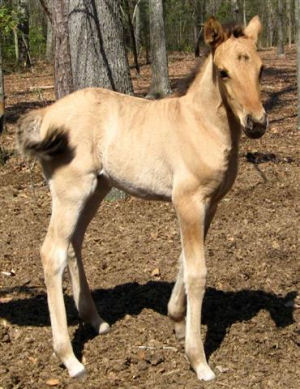
Marsh Tacky Foal
Photograph © Jackie McFadden. Used with permission.
Additional Information
Carolina Marsh Tacky Association: Official website offers information on state heritage horse including the history of the breed, the breed standard, and video of the ceremonial bill signing naming the marsh tacky the official state heritage horse of South Carolina.
Carolina Marsh Tacky Outdoors: Website of South Carolina marsh tacky owner, breeder, advocate David Grant.
Marsh Tackies on YouTube: Video of marsh tackies, including races and the bill-signing naming the marsh tacky South Carolina's official state heritage horse.
Equus caballus (Horse): The University of Michigan Museum of Zoology: Animal Diversity Web.
Equus caballus - (Linnaeus, 1758), Horse: A network connecting science with conservation - NatureServe Explorer: An Online Encyclopedia of Life.
Equus caballus Linnaeus, 1758: Integrated Taxonomic Information System (ITIS) Here you will find authoritative taxonomic information on plants, animals, fungi, and microbes of North America and the world.
State Horses: Complete list of official horses from NETSTATE.COM.
State Mammals: Complete list of official state mammals from NETSTATE.COM.
More symbols & emblems: Complete list of official South Carolina state symbols from NETSTATE.COM.
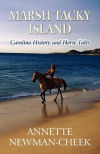
Marsh Tacky Island
Marsh Tacky Island: Carolina History and Horse Tales, by Annette Newman-Cheek. 84 pages. Publisher: PublishAmerica (December 24, 2010) Marsh Tacky Island is part Carolina history, part Southern recipe book, and part collection of short stories about growing up in the Lowcountry, when things were simple and when nature provided the playground.

Short & Tall Tales
of Hilton Head Island
Margaret Greer
Short & Tall Tales of Hilton Head Island, by Margaret Greer. 128 pages. Publisher: D.W. Friesen (2004) Some of the stories were told to me by native Islanders, others by "old-timers" like myself, and a few actually happened to me and my friends. This is a way of passing them along, sprinkled amid outstanding photographs by naturalist, ornithologist, environmentalist Barry Lowes, some sketches by my husband Walter Greer, and assorted memorabilia shared by many.

Horse and Pony
Encyclopedia
Sandy Ransford
The Kingfisher Illustrated Horse and Pony Encyclopedia, by Sandy Ransford. 224 pages. Publisher: Kingfisher; Revised and Updated edition (October 12, 2010) Reading level: Young adult. The Kingfisher Illustrated Horse & Pony Encyclopedia is a fantastic gift for children who dream of having a horse or pony of their own. There is a clear introduction to the horse followed by chapters explaining horse and pony care, riding lessons, and breeds. The encyclopedia is packed full of gorgeous photographs of horses and ponies -- showing how they look, what they do, and where in the world they are found. And of course every horse lover wants to ride, and The Kingfisher Illustrated Horse & Pony Encyclopedia takes the novice rider from first mount to cantering and galloping.
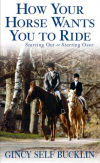
How Your Horse
Wants You to Ride
Gincy Self Bucklin
How Your Horse Wants You to Ride: Starting Out, Starting Over, by Gincy Self Bucklin. Hardcover: 432 pages, Howell Book House (October 15, 2004) In this breakthrough guide, renowned riding expert Gincy Self Bucklin offers adult riders a unique, proven method for developing a good physical, mental, and emotional relationship with a horse. Whether you're a beginner, a more experienced rider looking to enhance your skills, or someone who used to ride but is reluctant to try again, Bucklin's step-by-step exercises-slowly and carefully practiced first on the ground and then on your horse-will have you riding with confidence and without fear.
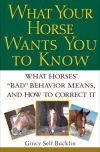
What Your Horse
Wants You to Know
Gincy Self Bucklin
What Your Horse Wants You to Know: What Horses' "Bad" Behavior Means, and How to Correct It, by Gincy Self Bucklin. Paperback: 208 pages, Howell Book House (October 3, 2003). It takes time for a horse to learn everything we want him to know. If we don't make our intentions clear to him in ways that he can understand, or if we don't listen to what he wants, problems may result. Featuring easy-to-follow, step-by-step advice, What Your Horse Wants You to Know reveals how to communicate effectively with your horse to create an atmosphere of mutual cooperation. What Your Horse Wants You to Know focuses on improving your horse's behavior on the ground, so you can develop relationship and communications skills without the more challenging problems that arise once you're on his back.

More How Your
Horse Wants You
to Ride
Gincy Self Bucklin
More How Your Horse Wants You to Ride: Advanced Basics, The Fun Begins, by Gincy Self Bucklin. Hardcover: 339 pages, Howell Book House (March 6, 2006) This follow-up to How Your Horse Wants You to Ride helps intermediate to advanced riders improve their communication with their mounts and polish their overall riding skills. Readers get a complete tutorial--much of which can be found nowhere else--on taking their riding skills to the next level.
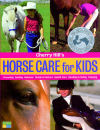
Cherry Hill's
Horse Care for Kids
Cherry Hill
Cherry Hill's Horse Care for Kids: Grooming, Feeding, Behavior, Stable & Pasture, Health Care, Handling & Safety, Enjoying, by Cherry Hill. Hardcover: 128 pages, Storey Publishing, LLC (August 5, 2002). Cherry Hill presents the essentials of horse care in a format and tone perfect for passionate teen and pre-teen horse lovers. Beginning with how to match the right animal with the right rider and progressing through feeding, grooming, stabling, health care, safety, and much more, this book provides everything a young equestrian wants and needs to know about horses.
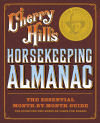
Cherry Hill's
Horsekeeping Almanac
Cherry Hill
Cherry Hill's Horsekeeping Almanac, by Cherry Hill. Paperback: 576 pages, Storey Publishing, LLC; 1 edition (October 16, 2007). Everyone who loves and works with horses needs a master plan to keep the horse farm running smoothly and the residents (human and equine) happy and healthy. Here is Cherry Hill’s "Horsekeeping Master Plan," her month-by-month guide to all the workings of a horse farm, with reminders, to-do lists, reference charts, climate notes, equine wit and wisdom, and an “Ask Cherry” feature. Hill’s advice helps every horseperson — new and experienced, Western and English — establish routines that follow the natural cycles of the animals and the land. This almanac is a valued resource readers will keep on hand to welcome each new season to the farm.
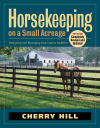
Horsekeeping on
a Small Acreage
Cherry Hill
Horsekeeping on a Small Acreage: Designing and Managing Your Equine Facilities, by Cherry Hill. Hardcover: 320 pages, Publisher: Storey Publishing, LLC; 2 edition (March 1, 2005) In this thoroughly updated edition of her best-selling classic, Cherry Hill teaches you how to be a responsible steward of the land and refine your “horsekeeping consciousness” while providing horses with the best care possible. A thorough understanding of horses is critical to good horsekeeping. Hill explains the behavior and needs of the horse, then helps you choose a management method that fits your lifestyle and locale. Read this book, and learn how to maximize your horsekeeping effectiveness with careful planning of facilities and diligent management routines that will keep horses happy, healthy, and safe.
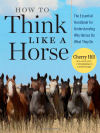
How to Think
Like A Horse
Cherry Hill
How to Think Like A Horse: Essential Insights for Understanding Equine Behavior and Building an Effective Partnership with Your Horse, by Cherry Hill. Hardcover: 176 pages, Storey Publishing, LLC (May 1, 2006) Horse trainer and instructor Cherry Hill believes that every human/horse relationship benefits from a greater human understanding of what motivates horses, how they experience the world, what makes them happy, and what worries them. Journey through the equine mind with Hill as she explores all that makes a horse tick.

